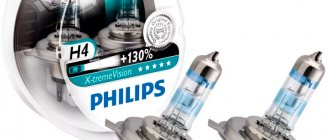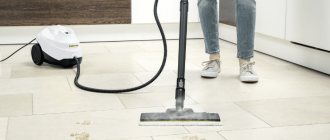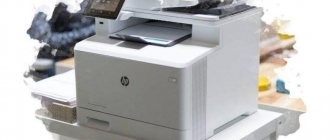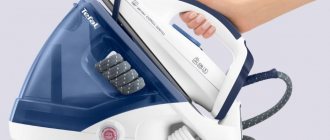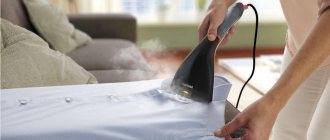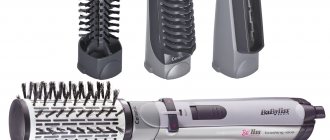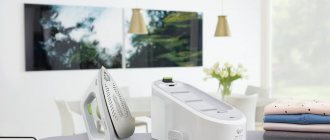Manicure services are provided by beauty salons, nail bars and individual masters. But such a familiar service can be dangerous. If the master has not sterilized the instruments well enough, then a fungal infection may be added to the fashionable nail design.
In order to ensure safe work, the master must use a working and high-quality sterilizer and conscientiously follow all the rules for sterilizing instruments. Nowadays, dry-heat ovens are becoming increasingly popular among sterilizers.
Purpose and principle of operation of the dry-heat oven
A dry-heat cabinet for manicure instruments is a sterilization device that cleans instruments using dry steam. It is designed to destroy microorganisms from the surface of metal and glass objects. Dry-heat ovens were the first to be appreciated by doctors, who use them to sterilize instruments that have been in contact with the blood of patients.
Later, aesthetic medicine clinics began to use this sterilizer, and then it began to be used in beauty and nail salons. The dry-heat oven is a heat-resistant chamber equipped with a heating element and stainless steel trays for placing sterilized instruments.
Modern dry-heat ovens have a display that allows you to adjust the temperature and sterilization mode.
In order to sterilize manicure instruments in dry heat, you need to pre-treat them with a disinfectant. Then place them in trays inside the sterilizer. For some types of dry-heat ovens, it is necessary to pre-seal the tools in a craft bag.
Next, you need to close the sterilizer lid and select the processing mode on the display. Once turned on, the heating element inside the cabinet circulates hot air, which destroys all microorganisms that survived disinfection.
How does a sterilizer perform its functions better?
There are some nuances that are worth remembering before using the device for sterilization.
Pre-sterilization of instruments
- Before sterilization in the device, it is necessary to clean the instruments with special disinfectant liquids. Then the sterilization will take place as needed.
- The device must be cleaned from time to time by wiping it with mild cleaning liquids on the outside (soap solution, alcohol liquids) and only when it is turned off. Cleaning the inside (if it is not a device) is not necessary.
- Do not leave the device body wet after cleaning. It is better to immediately wipe with a soft cloth without any loose lint.
- Perform all operations with the device strictly according to the instructions in order to avoid poor-quality operation of the device and harm to health.
You should not experiment with sterilization devices - pour unknown liquids into them (if it is a device), use glass beads after their service life has expired (for glasperlene), etc.
Kinds
There are several types of processing of medical, manicure and cosmetic instruments:
| Type of processing | Principle of sterilization |
| Ball | Cleaning occurs by immersing the instruments for ten seconds in a flask filled with quartz balls heated over 220 degrees. |
| Glasperlen | Sterilization is carried out with glasperlene balls heated to a temperature of over 100 degrees. The tool is lowered there for 10-30 seconds. |
| Ultrasonic | Cleaning occurs due to a special solution that bubbles from ultrasonic waves and the bursting bubbles destroy all microorganisms. |
| UV | Cleaning is carried out using UV rays that destroy bacteria, viruses, fungi and other pathogens. Essentially, it is a disinfectant. |
| Air-steam | Sterilization occurs due to the circulation of hot air or steam. The temperature can vary from 135 degrees for steam to 260 degrees for dry air. |
Among the air-steam sterilizers, there are an autoclave and a dry-heat oven. An autoclave is more expensive, but allows you to quickly sterilize various instruments due to treatment with 135-degree steam. A dry-heat oven is cheaper, but it only processes metal tools with dry steam . The high temperature of the dry heat can damage the plastic or fabric.
What is sterilization and how to carry it out correctly?
Sterilization (Latin sterilis - sterile) is the process of destroying all types of microbial flora and viruses using physical or chemical influences. Sterilization of products is carried out with the aim of killing all pathogenic and non-pathogenic microorganisms on them. Sterilization is carried out by physical (steam, air, in the environment of heated balls) and chemical (use of chemical solutions) methods. The choice of sterilization method depends on the characteristics of the products being sterilized.
The Ministry of Health of the Russian Federation, in accordance with the Federal Law of March 30, 1999 No. 52-FZ (as amended on July 23, 2013) “On the sanitary and epidemiological welfare of the population” (as amended and additionally entered into force on September 1, 2013) prescribes medical treatment for everyone -preventive institutions, as well as hairdressers, beauty salons, cosmetology centers and other beauty industry enterprises, strict adherence to the medical and technological sterilization process.
The medical-technological process of sterilization consists of the following stages:
- pre-treatment and disinfection of instruments;
- pre-sterilization cleaning;
- sterilization by one of the known methods;
- storage of sterilized products.
Each of these stages is regulated by the guidelines of the Ministry of Health of the Russian Federation.
Flaws
But dry heat sterilizers also have disadvantages:
- Duration of the sterilization process.
- The need to follow the rules for loading tools to ensure access to hot air.
- Suitable for use with metal and glass instruments only.
Safety precautions
- Only those employees who have undergone safety training when working with a dry-heat oven are allowed to use the dry-heat oven;
- To ensure fire safety, the sterilizer is installed on a sheet of asbestos cardboard;
- Do not load the cabinet at temperatures above 40 degrees;
- After the end of the processing cycle, the dry-heat oven is disconnected from the network;
- To prevent overheating and damage to parts of the device, it should not be installed near heating systems, such as radiators.
Instructions for sterilizing manicure instruments in a dry-heat oven
The dry-heat cabinet for manicure instruments must be used as described in the instructions.
Depending on the model of the device, some nuances of operation may vary, but the general rules are the same for all devices:
- First, the instruments must be placed in a disinfectant solution. The processing time and dilution method are indicated in the instructions for the disinfector.
- After disinfection, it is necessary to rinse the instruments in running water with a brush or rag.
- Next, you need to conduct a test for hidden blood by wiping the working surface of the instrument with a reagent. If the reaction does not occur, then you should rinse the instrument and proceed to the next step. If the reagent has changed color, you must return to step 1.
Air-steam type of treatment for manicure tools. - Cleaned instruments must be dried on a cloth, which must also be regularly subjected to special treatment.
- Dried instruments are sealed in a special craft bag with a gray sticker attached to it. In addition, the craft package must indicate what instrument is inside, the date of its sterilization and the name of the person in charge. All notes on the craft bag are made before the tools are placed in it. If you sign it after the instrument has been removed and sealed, there is a risk of damaging the package and breaking its seal.
- The dry-heat oven heats up to 180 degrees.
- Kraft bags with contents are placed in trays inside the sterilizer.
- After the lid of the dry-heat cabinet is closed, you can set the time and processing mode on the display.
- After processing is completed, the Kraft bags are removed from the dry heat, but are not opened.
- The gray sticker changed color and turned brown. This is an indication that the contents of this craft package were sterilized in dry heat.
- The craft bag is opened in front of the client. This guarantees and demonstrates the sterility of manicure instruments.
In a closed package, sterility is maintained for a month.
Features of using a sterilizer and rules for caring for it
Do not immerse instruments in water after undergoing the disinfection procedure. Disinfecting accessories in a sterilizer is not enough to remain a sought-after professional with a high reputation. Experts recommend processing any type of instrument directly in front of the client. Before starting a manicure, it is advisable to remove the prepared tools from the device.
If you have not yet acquired a sterilizer, you can temporarily use a microwave or oven. It is also important for a novice master to take into account a few tips for working with an electrical device.
- Place only acceptable instruments in the disinfectant (if plastic ones are prohibited, immediately exclude them and process them in a different way).
- Once again, do not overexpose the tweezers and removers for trim manicure. They tend to become dull when exposed to high temperatures.
- If the instructions so require, be sure to pre-treat the instruments using liquid products containing alcohol.
We have provided you with comprehensive information about the types and models of manicure sterilizers that are leading in the industry. Leave your questions and recommendations in the comments - we will quickly contact you to discuss what you have written.
Device selection criteria
A dry-heat cabinet for manicure instruments is required by salons, nail bars, and professionals working at home.
They all choose sterilizers based on 5 main criteria:
- Degree of disinfection. Does the sterilizer destroy all pathogens and their spores? The higher the instrument processing temperature, the higher the level of disinfection. The leader in this indicator is a dry heat sterilizer. Second place is shared between ball and glasperlene.
Glasperlene sterilizer disinfects faster than a dry-heat oven for manicure instruments. - Sterilization speed . This criterion is important for manicure salons with a constant flow of clients. The less time spent on sterilization, the faster you can start working with the next client. Here, the dry-heat oven does not show very good results, since it takes 60 minutes to completely sterilize the instruments. For comparison, a Glasperlene sterilizer does the job in 10 seconds. But this is not a reason to give up dry heat. In beauty salons with high traffic, the master uses several sets of tools. And while one set is sterilized, you can work with the other. Craftsmen who work from home, as a rule, do not work with a continuous flow of clients.
- Intuitive interface or ease of use of the sterilizer . The simpler the sterilization process is, the fewer mistakes will be made.
- Size and number of tools processed at a time . These are proportional indicators. The larger the sterilizer, the more instruments can be loaded into it at one time. But “more” does not mean “better”. For large salons with a large flow of clients, a large sterilizer is indeed useful. It will allow you to avoid creating queues and process all the necessary tools at once. But craftsmen working at home don’t need a large sterilizer. They won’t accumulate so many tools even in one day. In addition, home workers, as a rule, do not have space to place a large sterilizer. It is better for them to choose more compact models.
- Price . It may depend not only on the actual characteristics of the sterilizer, but also on the retail markup and the manufacturer’s brand.
SanPiN requirements for dry heat
When inspecting Rospotrebnadzor, special attention is paid specifically to the method of processing the tool and the devices intended for this.
If you are visited by SES officers, you must present:
- Registration certificate of a medical device. This document must come with the device. The certificate confirms the safety of the device;
- Instructions in Russian.
- Certificate or declaration of conformity;
- Contract of sale;
- Post warranty service agreement.
These requirements are dictated by Article 454 of the Civil Code of the Russian Federation and the requirements of SanPiN 2.1.2.2631-10 “Sanitary and epidemiological requirements for the location, structure, equipment, maintenance and operating hours of public utility organizations providing hairdressing and cosmetic services.”
Sanitary standards for beauty salons, manicures, hairdressers. Updated requirements 2021
Which sterilizer to choose: review of popular models
When choosing a sterilizer for manicure instruments, it is important to understand where and how it will be used. Craftsmen working at home prefer to use compact and inexpensive sterilizers. Large beauty salons are not limited in funds, so they can afford expensive and spacious models.
Compact sterilizers
The most compact sterilizers are ball and glasperlene. They are the fastest. However, they are quite expensive and require regular replacement of the balls. But even among such sterilizers there are budget models. For example, Macrostop Silverfox. This is a small glasperlene sterilizer. Its dimensions: 17 cm in height and 16 cm in diameter. Heats up to 250 degrees.
In this temperature mode, 15–20 seconds are enough to completely sterilize the instrument. Ultrasonic sterilizers seem more cumbersome at first. But since they combine the functions of a sterilizer and a disinfector, they really save space, since one is used instead of two devices.
But you have to pay extra for 2 in 1 functions. Ultrasonic sterilizers are the most expensive on the market. A relatively affordable model is the Donfeel HB-382 ultrasonic sterilizer. It will cost almost twice as much as Macrostop Silverfox. Ultrasound operates at room temperature. Dimensions of the device: base with a diameter of about 20 cm and height 13 cm.
A dry-heat cabinet for manicure tools can be compact. For example, the TNL PROFESSIONAL model is a box with a base of 31*14 cm and a height of less than 20 cm. Despite its modest size, this dry heater is quite powerful: it can heat up to 200 degrees and maintain this temperature for 2 hours.
This is more than enough to destroy any known microorganisms. But this device also has disadvantages. Due to the small size of the sterilizer, you cannot put a craft bag in it, since this bag will come into contact with the heating elements of the device and will simply burn out, the seal will be broken.
Therefore, instruments in TNL PROFESSIONAL are sterilized without a craft bag; they are simply loaded into the sterilizer tray.
Therefore, in order not to compromise the sterility of the instruments, they will have to be stored directly in the sterilizer until the next use. The WILSON PS-3401 dry-heat oven from Irisk Professional is slightly taller and wider. It can also heat up to 200 degrees, but the timer allows you to keep this temperature only for up to one hour.
This fully complies with sterilization standards. Tools are loaded into this dry heat in craft bags. But it is recommended to tuck the edges of the bag as much as possible to prevent it from coming into contact with the heating elements of the sterilizer and to avoid charring of the Kraft bag.
The dry heat sterilizer model CH-360T is the same in size as the TNL PROFESSIONAL, but the maximum temperature of the CH-360T is higher - it is 220 degrees, and the maximum operating time is 1 hour. Treats instruments in a craft bag with dry air, which allows them to remain sterile for a month after removing the bag from the dry heater.
In addition to the plastic handle on the lid, it also has a wooden handle on the side. It does not heat up and allows you to move the dryer immediately after finishing work. The msd-218 cabinet, like the CH-360T, is a box measuring 31*14*18 cm. It also heats up to 220 degrees, but the timer can be set for 2 hours. Allows you to sterilize instruments both in a craft bag and without it.
The side handle of this sterilizer is made of metal and can heat up during operation. This makes the msd-218 significantly less mobile than the CH-360T. The dryer NV-210 is similar in characteristics to the msd-218, but does not have a side handle.
Among autoclaves it is difficult to find a compact model. It's worth paying attention to Sanity Security. This small Italian-made autoclave weighs only 6 kg with a working chamber volume of 2.5 liters. Its dimensions are 43*30*29 cm. It heats the steam to 250 degrees and processes the tools for half an hour. Although its mechanical timer can be set for 1 hour.
Capacious sterilizers
If the size of the room allows, then you can take larger sterilizers. This will allow you to process more tools at once. Such sterilizers allow you to safely place craft bags inside without fear that they will come into contact with heating elements.
The domestic device “GP-10 MO Air Sterilizer” has proven itself to be high-quality, convenient and inexpensive. It is relatively small - only 42 cm in height, base - 44*45 cm. The operating temperature of the sterilizer is from 50 to 200 degrees . The operating time can be set up to 17 hours.
It needs about half an hour to warm up to 180 degrees, necessary for high-quality sterilization. There is no forced cooling in this device, but there is an emergency shutdown system when overheating above 210 degrees. There are 3 standard operating modes and the ability to adjust parameters arbitrarily.
This sterilizer is used for processing medical instruments, but it is also suitable for manicure instruments.
Another domestic dry heat sterilizer is GP-20-Oh PZ. Unlike its younger brother, it is somewhat larger: 58 * 54 cm at the base and 55 cm in height, but at the same time the volume inside is twice as large - 20 liters. It has a forced cooling system that can operate without supplying cold air from outside. But its heating time is longer and its price is higher.
Models of a number of GPs come in 40 and 80 liters, both with and without additional cooling. The presence of additional cooling affects the price more than the volume of the working chamber of the device. Of the imported models, the Tau 2000 may be of interest - a 20-liter dry-heat oven with three shelves. It operates in a mode from 90 degrees to 200, automatically adjusting the temperature.
Has an emergency shutdown system. The automatic timer can be set for any time up to 2 hours inclusive. If processing is required for more than 2 hours, it can be carried out manually. The most budget class B autoclave is the Youjoy BES-12-B model. Working chamber volume – 12 l.
This autoclave has high power and operates in two temperature modes of 120 and 135 degrees, and provides vacuum drying. Copes with sterilization even of serrated instruments. The autoclave BTD 12L-A is similar in volume and characteristics. But in addition to everything else, it has 8 automatic sterilization programs. That's why it's a little more expensive.
Latest generation models, such as the Vacuklav 31B+ with a capacity of 18 l, do not require a water connection and have additional functions for the treatment of high-risk instruments (potentially infectious). But they also cost many times more.
What to look for when buying a bottle sterilizer
The first thing you should decide is the method of processing children's dishes that is most preferable for you. The most common is the thermal method (steam sterilization). In this case, the water in the lower bowl of the device is heated to a temperature of 100 degrees and turns into steam. It is he who disinfects the baby’s dishes, placed “on the floor” above the water tank.
Another important point: it is better to choose a sterilizer after childbirth. When it becomes clear whether the child will be breastfed, whether he needs supplementary feeding or whether he will completely switch to formula. All this determines how often the sterilizer will be used and how spacious it should be.
Also, when purchasing a sterilization device, pay attention to the following things.
- Material of manufacture. This is usually thermoplastic. It is important that it is of high quality and safe, and does not emit an unpleasant odor when heated. Check for product certificates.
- Dimensions. If you travel often, choose a compact device. And in a small kitchen there may simply not be room for a bulky device. If you buy a microwave sterilizer, consider the capabilities of your microwave oven.
- Power. The higher it is, the faster the bottles are processed. A good indicator is more than 700 W. As for microwave sterilizers, with a microwave oven power of 1200-1850 W, the process of disinfecting dishes takes about 2 minutes, 850-1100 W - twice as long, and with a power of up to 800 W, sterilization will last 5-7 minutes.
- Capacity. It is especially important for parents who have several small children or a bottle-fed baby.
- Duration of sterilization. Steam devices are the fastest, followed by UV devices, followed by chemical sterilizers.
- Time during which glassware remains sterile. Valuable if it is not possible to disinfect bottles and nipples each time before use.
- Automation of work. Light and sound indicators and the auto-off function are convenient because they eliminate the need to stand guard near the sterilizer while waiting for the processing process to end.
- The need to purchase children's dishes of a certain shape and brand. Sometimes the holders in the sterilizer only fit certain types of bottles.
- Additional functions built into universal sterilizers. This includes drying dishes, eliminating unpleasant odors, defrosting milk, as well as heating liquids, purees and solid foods.
All sterilizing devices heat baby food products in a water bath, which allows them to preserve useful microelements and vitamins.
Large manufacturers trusted by mothers:
- Kitfort (Russia).
- Philips (Netherlands).
- Ramili Baby (England).
- Miniland (Spain).
- Ecomom (USA).
- Chicco (Italy).
Cost of dry heat ovens
One of the most important criteria for choosing a sterilizer is price. According to this parameter, dry-heat ovens are more profitable than autoclaves.
The cost of the above models is approximately as follows:
- TNL PROFESSIONAL - a compact dry heater that works without craft bags - costs about 5,000 rubles.
- Wilson PS-3401 1.7 l. costs from 6,000 rubles.
- CH-360T 2 liter capacity. will cost about 4500 rubles.
- msd-218 with a metal handle costs 5300 – 5700 rubles.
- NV-210 without a side handle costs from 8,000 rubles.
- The compact autoclave Sanity Security will cost approximately 25,000 rubles.
- A 10-liter dry heater GP-10 MO without forced cooling costs about 16,000 rubles.
- A 20-liter GP-20-Oh PZ with forced cooling will cost 20,000 rubles.
- A 40-liter GP-40 SPU with cooling costs about 22,000 rubles.
- 80-liter GP with cooling – 25,000 rubles.
- Imported dry roaster Tau 2000 with a volume of 20 liters costs from 32,000 rubles.
- The budget 12-liter autoclave Youjoy BES-12-B will cost 103,000 rubles.
- Similar BTD 12L-A with 8 auto modes – 115,000 rubles.
- New generation 18 liter autoclave Vacuklav 31B+ costs 350,000 rubles.
Of all the modern sterilizers for manicure instruments, dry-heat cabinets represent the optimal combination of price and quality. The temperatures maintained by the dry heat, as well as the processing time, make it possible to destroy all known microorganisms from the surface of instruments that can withstand high temperatures.
Sukhozhar is a budget sterilizer. Small volume models cost less than 10 thousand rubles. Guaranteeing the safety of nail technicians is much more expensive.
Article design: Anna Vinnitskaya


